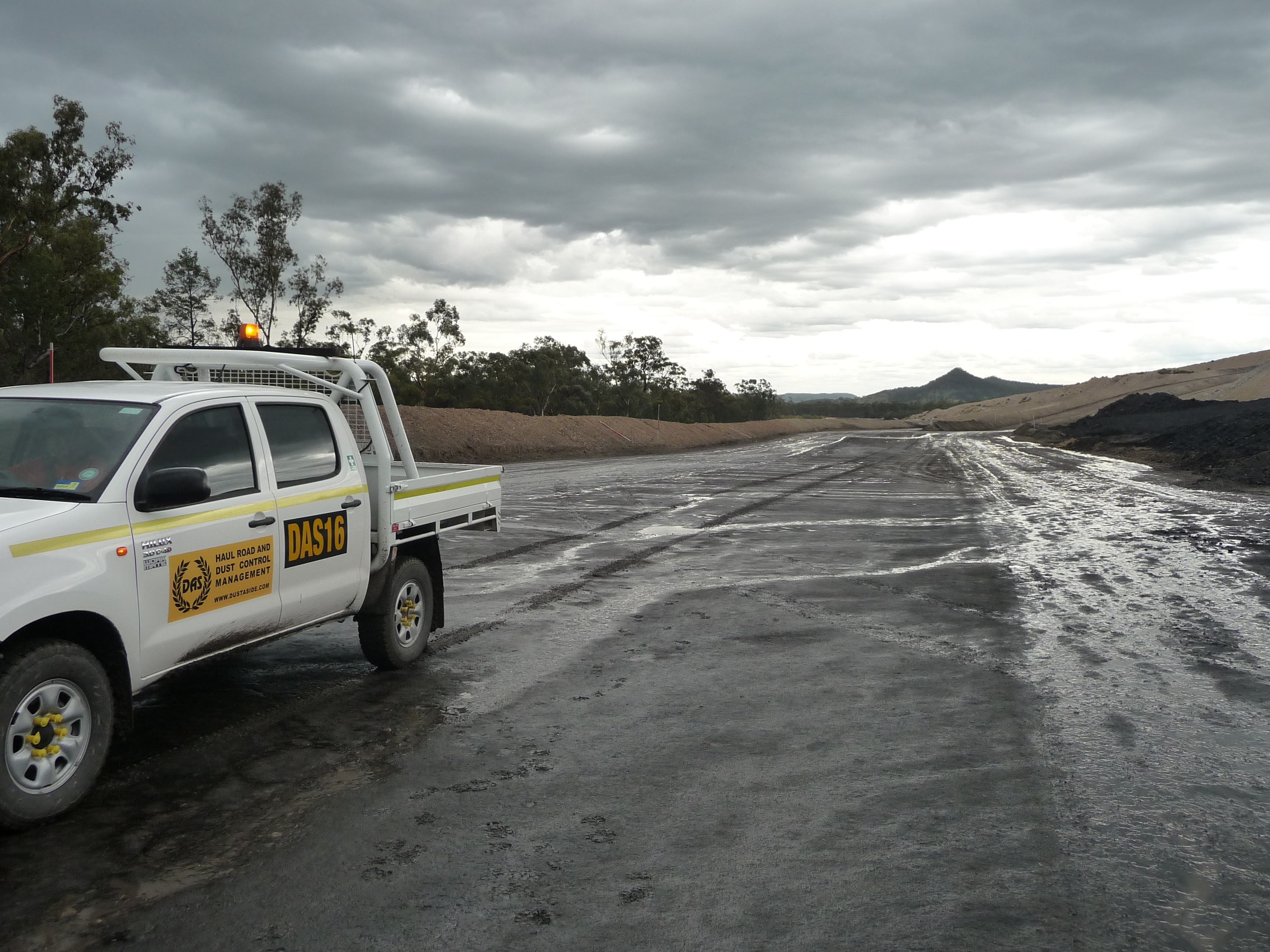Why re-sheeting haulroads doesn’t have to be an annual expenditure

Many mine managers consider re-sheeting haul roads to be a necessary evil, a task that has to be performed on a yearly basis.
A lot of mines factor the cost of re-sheeting into their annual maintenance budgets, accepting it as a “normal” operational expense that affects the total cost of ownership of the asset.
In high rainfall areas such as northern Australia, re-sheeting the surface wearing course material– often seen as the ‘sacrificial’ course – has to take place even more regularly.
As you would well know, it’s a big outlay for very little return.
However, it doesn’t have to be that way; re-sheeting definitely does not ave to be an annual cost.
With over 45 years’ experience at mine sites throughout the world, Dust-A-Side Australia have perfected the art – and science – of creating superior haul roads.
Through our Road Management Services, we have the technology and know-how to produce low maintenance haul roads at the lowest possible cost.
The problems of re-sheeting haul roads
Apart from the initial outlay, there are numerous problems associated with re-sheeting haul roads.
They include:
- Loss of production while your haul roads are waiting to be re-sheeted and in the process of being re-sheeted
- Possible safety factors (traffic interactions, rough roads and uncontrolled movements for example)
- Time and cost spent repairing the actual damage and washouts
Different mines tackle this problem differently.
Some take a proactive approach, opting for full replacement of the wearing course annually to prepare for the wet season — especially in high rainfall environments.
Others feel that a better strategy is to re-sheet AFTER ‘the big wet’ when the road has been seriously degraded.
In either event, it is a substantial cost.

The ever-increasing cost of re-sheeting haul roads
Re-sheeting costs will vary depending on a number of factors.
For example, if wearing course material has to be brought in from an offsite quarry or other source, costs can begin to mount up.
The costs of drilling, blasting, crushing, re-handling, placing, shaping, compacting and watering this material also needs to be factored in.
Furthermore, the argument some mines put forward is that they don’t want to pay top dollar for re-sheeting material as the expectation is that sooner or later it will be eroded and have to be replaced. The more they see their expensive material being washed away, the further this mindset is reinforced.
This thought process means that the cycle of needing to re-sheet roads will never change and mines will continue to incur high on-going operating expense.
But with the right approach to road management, it doesn’t need on-going replacement.
How Dust-A-Side Australia’s haul road management service reduces haul road maintenance costs
Imagine a waterproof binder that is slow to degrade, and retains the integrity of the wearing course so that fines are not washed out every time it rains.
That’s what Dust-A-Side Australia’s flagship road stabilisation product, DAS Product, does. Stabilising your haul roads with DAS Product can lessen the erosion of fines and protect the underlying structural layers of your haul road by providing a waterproof seal.
Also, there is the added benefit of;
- Eliminating conventional mine site grading practices that waste good road material, and
- Significantly reducing water cart utilisation that deteriorate your haul roads every time they spray water.
The end result is that you reduce your haul road re-sheeting requirements by over 90%. Put simply, if you currently re-sheet your haul roads every year they can now be done as little as once in ten years.
Eliminating re-sheeting lowers on-going operating expenditure
The cost of incorporating the DAS Product may well be offset by the savings you’ll make on re-sheeting. And longer term, by:
- Reducing/ eliminating the need for on-going road maintenance, machinery involved in re-sheeting, and water carts used for dust suppression
- Lowering fuel usage costs through improved rolling resistance, and
- Improving tyre life due to a better running surface and less water (which accelerates tyre wear)
Not only that, but there’s the improved productivity you will achieve through faster recovery times after wet weather, faster cycle times via improved rolling resistance, and reduced operational delays due to excessive dust.
Finally, you’ll enjoy enhanced safety and sustainability through lower:
- Dust levels
- Likelihood of uncontrolled movements
- CO2 emissions, and
- Operator fatigue
Ready to say goodbye to annual re-sheeting?
For more information and advice about re-sheeting haul roads, haul road design and maintenance, DAS Product, or anything mentioned in this article, call 1800 662 387 and speak to one of our engineers. Alternatively, simply click here to contact us.



